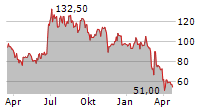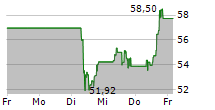
Company announcement - No. 48 / 2024
Zealand Pharma provides U.S. regulatory update on dasiglucagon in congenital hyperinsulinism
- U.S. Food and Drug Administration (FDA) issues Complete Response Letter (CRL) for dasiglucagon in CHI for up to three weeks of dosing due to the timing of a third-party manufacturing facility reinspection
- The reinspection of the facility was completed in August/September 2024 for which a new inspection classification is pending
- Zealand remains committed to working with the FDA and the third-party manufacturer to bring dasiglucagon to patients in the U.S. as soon as possible
Copenhagen, Denmark, October 9, 2024 - Zealand Pharma A/S (Nasdaq: ZEAL) (CVR-no. 20045078), a biotechnology company focused on the discovery and development of innovative peptide-based medicines, today announced that the U.S. Food and Drug Administration (FDA) has issued a Complete Response Letter (CRL) for Part 1 of the New Drug Application (NDA) for dasiglucagon for the prevention and treatment of hypoglycemia in pediatric patients 7 days of age and older with congenital hyperinsulinism (CHI) for up to 3 weeks of dosing.
The CRL is related to the timing of a reinspection at a third-party contract manufacturing facility that was completed in August/September 2024. The third-party manufacturer has not yet received its inspection classification following the reinspection. A prior inspection of the facility had identified deficiencies that did not involve dasiglucagon. These prior deficiencies had been resolved as of this reinspection. The CRL did not state any concerns about the clinical data package or safety of dasiglucagon.
"We at Zealand Pharma are acutely aware of the significant unmet medical need for newborns and children with congenital hyperinsulinism who have either no or very limited treatment options today," said David Kendall, M.D., Chief Medical Officer of Zealand Pharma. "We are committed to working with the FDA and our third-party manufacturing partner to bring dasiglucagon to patients living with this devastating disease in the months ahead."
The regulatory review of dasiglucagon is being conducted in two parts under the same NDA. Part 1 relates to dosing of up to 3 weeks and Part 2 relates to the use beyond 3 weeks. Supporting the use of dasiglucagon in CHI beyond 3 weeks, the FDA requested additional analyses from existing continuous glucose monitoring (CGM) datasets from the Phase 3 clinical program. Zealand expects to submit these data by the end of 2024.
About congenital hyperinsulinism
Congenital hyperinsulinism (CHI) is a severe, ultra-rare genetic disease, primarily affecting infants and children, in which the pancreatic beta cells dysfunction and secrete too much insulin, leading to frequent, recurrent, and often severe episodes of hypoglycemia. Persistent episodes of hypoglycemia can result in seizure, brain damage and death.1,2 It is estimated that CHI develops in one out of 50,000 (or more) children, corresponding to 180-300 newborns being diagnosed with the disease in the US and Europe every year.3,4
CHI has a significant impact on patient quality of life. Complex care requirements, including continuous intravenous infusion of glucose, can result in lengthy and frequent hospitalizations and make daily social activities difficult for both patients and their families. The only currently approved medical treatment for hyperinsulinism is diazoxide, which can be associated with increased risk of fluid retention, pulmonary hypertension, and congestive heart failure.5 Glucagon and the somatostatin analog octreotide may be used but are not approved therapies. It is estimated that more than 50% of CHI patients do not respond adequately to the medical treatment options currently available, so there remains a significant unmet medical need for more and better treatment options.6
About dasiglucagon
Dasiglucagon is a glucagon receptor agonist that works by causing the liver to release stored sugar to the blood and is being evaluated for the prevention and treatment of hypoglycemia in infants and children with congenital hyperinsulinism. Dasiglucagon is designed to be administered by continuous subcutaneous infusion using a wearable pump system. Zealand Pharma has a collaborative development and supply agreement with DEKA Research & Development Corporation and affiliates for the wearable subcutaneous infusion pump system.
About Zealand Pharma
Zealand Pharma A/S (Nasdaq: ZEAL) ("Zealand") is a biotechnology company focused on the discovery and development of peptide-based medicines. More than 10 drug candidates invented by Zealand have advanced into clinical development, of which two have reached the market and three candidates are in late-stage development. The company has development partnerships with a number of pharma companies as well as commercial partnerships for its marketed products.
Zealand was founded in 1998 and is headquartered in Copenhagen, Denmark, with a presence in the U.S. For more information about Zealand's business and activities, please visit www.zealandpharma.com.
Forward looking statements
This company announcement contains "forward-looking statements", as that term is defined in the Private Securities Litigation Reform Act of 1995 in the United States, as amended, even though no longer listed in the United States this is used as a definition to provide Zealand Pharma's expectations or forecasts of future events regarding the research, development and commercialization of pharmaceutical products, the timing of the company's pre-clinical and clinical trials and the reporting of data therefrom. These forward-looking statements may be identified by words such as "aim," "anticipate," "believe," "could," "estimate," "expect," "forecast," "goal," "intend," "may," "plan," "possible," "potential," "will," "would" and other words and terms of similar meaning. You should not place undue reliance on these statements, or the scientific data presented. The reader is cautioned not to rely on these forward-looking statements. Such forward-looking statements are subject to risks, uncertainties and inaccurate assumptions, which may cause actual results to differ materially from expectations set forth herein and may cause any or all of such forward-looking statements to be incorrect, and which include, but are not limited to, unexpected costs or delays in clinical trials and other development activities due to adverse safety events, patient recruitment or otherwise; unexpected concerns that may arise from additional data, analysis or results obtained during clinical trials; our ability to successfully market both new and existing products; changes in reimbursement rules and governmental laws and related interpretation thereof; government-mandated or market-driven price decreases for our products; introduction of competing products; production problems at third party manufacturers; dependency on third parties, for instance contract research or development organizations; unexpected growth in costs and expenses; our ability to effect the strategic reorganization of our businesses in the manner planned; failure to protect and enforce our data, intellectual property and other proprietary rights and uncertainties relating to intellectual property claims and challenges; regulatory authorities may require additional information or further studies, or may reject, fail to approve or may delay approval of our drug candidates or expansion of product labeling; failure to obtain regulatory approvals in other jurisdictions; exposure to product liability and other claims; interest rate and currency exchange rate fluctuations; unexpected contract breaches or terminations; inflationary pressures on the global economy; and political uncertainty, including the ongoing military conflict in Ukraine and the uncertainty surrounding upcoming elections in the US. If any or all of such forward-looking statements prove to be incorrect, our actual results could differ materially and adversely from those anticipated or implied by such statements. The foregoing sets forth many, but not all, of the factors that could cause actual results to differ from our expectations in any forward-looking statement. All such forward-looking statements speak only as of the date of this company announcement and are based on information available to Zealand Pharma as of the date of this announcement. We do not undertake to update any of these forward-looking statements to reflect events or circumstances that occur after the date hereof. Information concerning pharmaceuticals (including compounds under development) contained within this material is not intended as advertising or medical advice.
Contacts
Adam Lange (Investors)
Investor Relations Officer
Zealand Pharma
Email: alange@zealandpharma.com
Anna Krassowska, PhD (Investors and Media)
Vice President, Investor Relations & Corporate Communications
Zealand Pharma
Email: akrassowska@zealandpharma.com
References
1) Thornton PS et al. (2015) Recommendations from the Pediatric Endocrine Society for Evaluation and Management of Persistent Hypoglycemia in Neonates, Infants, and Children, J Pediatr. 2015;167(2):238-45.
2) Banerjee I et al. (2022) Correction to: Congenital hyperinsulinism in infancy and childhood: challenges, unmet needs and the perspective of patients and families, Orphanet J Rare Dis. 2022;17:61.
3) Arnoux JB et al. (2011) Congenital hyperinsulinism: current trends in diagnosis and therapy, Orphanet J Rare Dis. 2011; 6:63.
4) Yau et al. (2020) Using referral rates for genetic testing to determine the incidence of a rare disease: The minimal incidence of congenital hyperinsulinism in the UK is 1 in 28,389, Plos One. 2020;15(2).
5) PROGLYCEM® (diazoxide) oral suspension package insert (07/18/2024) https://www.accessdata.fda.gov/drugsatfda_docs/label/2024/017453s024lbl.pdf (accessed October 7, 2024)
6) Yorifuji et al. (2017) Clinical practice guidelines for congenital hyperinsulinism, Clin Pediatr Endocrinol. 2017;26(3):127-152.





